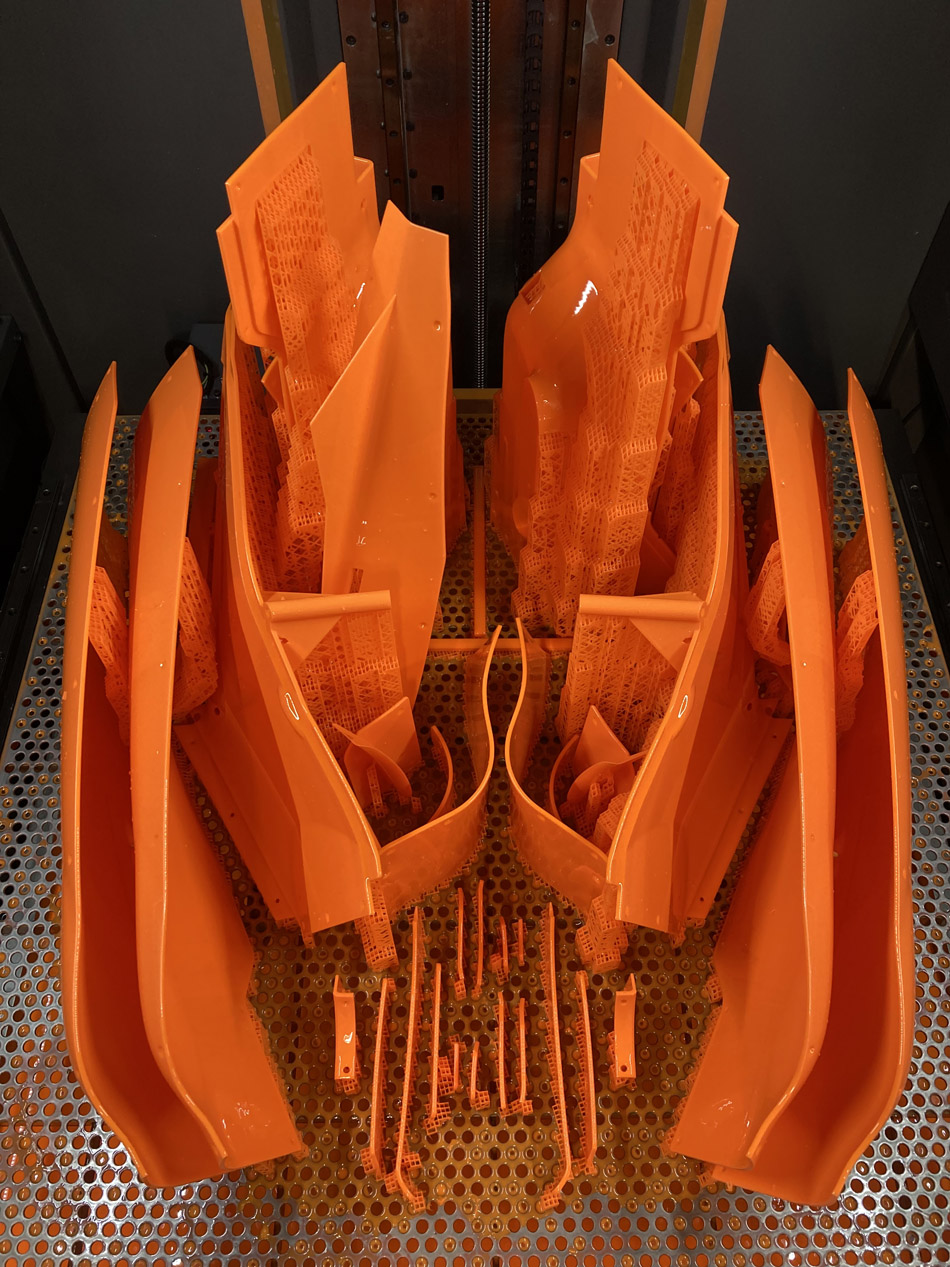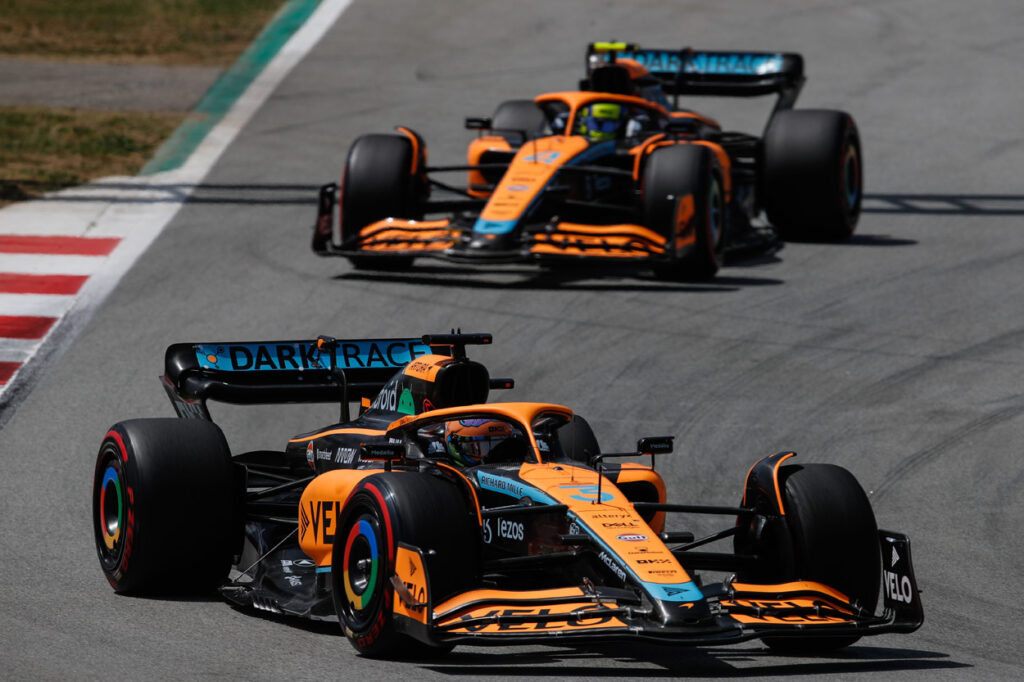Through the application of highly accurate 3D printed parts, McLaren Racing has been able to extract more meaningful results from aerodynamics tests in the wind tunnel in recent years. According to the race team, it has made big strides in its aero optimizations since the technology was adopted, and on top of this, it can now manufacture scale model top-bodies in just three days.
Tim Chapman, head of additive manufacturing at McLaren Racing, said, “Stereolithography technology and the materials have evolved – changing the way we use it. We do not just manufacture prototypes anymore; we now produce many full-scale components and full-size tooling.
“Wind tunnel testing is still the gold standard when assessing how every surface works together, either as an assembly or as a complete car. Our Neo series of 3D printers have helped us to dramatically reduce the lead times of our aerodynamic wind tunnel components and projects,” he affirms.
Initially, the impetus for using additive manufacturing was to bring down production costs because in 2021, following the Covid-19 pandemic, the budget cap in F1 was brought down from US$175m to US$145m, then in 2022 down to US$140m; for 2023 it is US$135m.
Using a Neo 800 stereolithography 3D printer from Stratasys, McLaren makes up to 9,000 parts per year across numerous front and rear wing programs as well as large parts of the side bodywork and top-body. All aerodynamic parts can be made at McLaren’s base in Woking, UK, which saves costs on subcontractors and quality assurance. The team can also 3D print jigs, templates and small molds that would have previously been machined from metal billets. From an aero testing perspective, 60% scale models can be carved out to assess and improve the car’s downforce. Somos Perform Reflect resin material is used, which was developed specifically for wind tunnel models and provides a strong, stiff part that takes 30% less time to post process.
 Chapman continued, “We find the high-definition components from our Neo machines require minimal hand finishing, which allows much faster throughput to the wind tunnel. In addition to speed, we can now produce wind tunnel parts with supreme accuracy, detail and surface finish, which has enabled our team to enhance testing and find innovative new ideas to improve performance. I cannot overstate how important these benefits are in Formula 1, with super-tight deadlines to deliver cars to the next race, and where the smallest design iteration can make all the difference between winning, losing or making up positions on the grid.”
Chapman continued, “We find the high-definition components from our Neo machines require minimal hand finishing, which allows much faster throughput to the wind tunnel. In addition to speed, we can now produce wind tunnel parts with supreme accuracy, detail and surface finish, which has enabled our team to enhance testing and find innovative new ideas to improve performance. I cannot overstate how important these benefits are in Formula 1, with super-tight deadlines to deliver cars to the next race, and where the smallest design iteration can make all the difference between winning, losing or making up positions on the grid.”
In addition to this, to enhance aerodynamics testing, McLaren embeds 50 to 60 air-pressure housings within its race cars to obtain air-pressure readings across the various surfaces.


